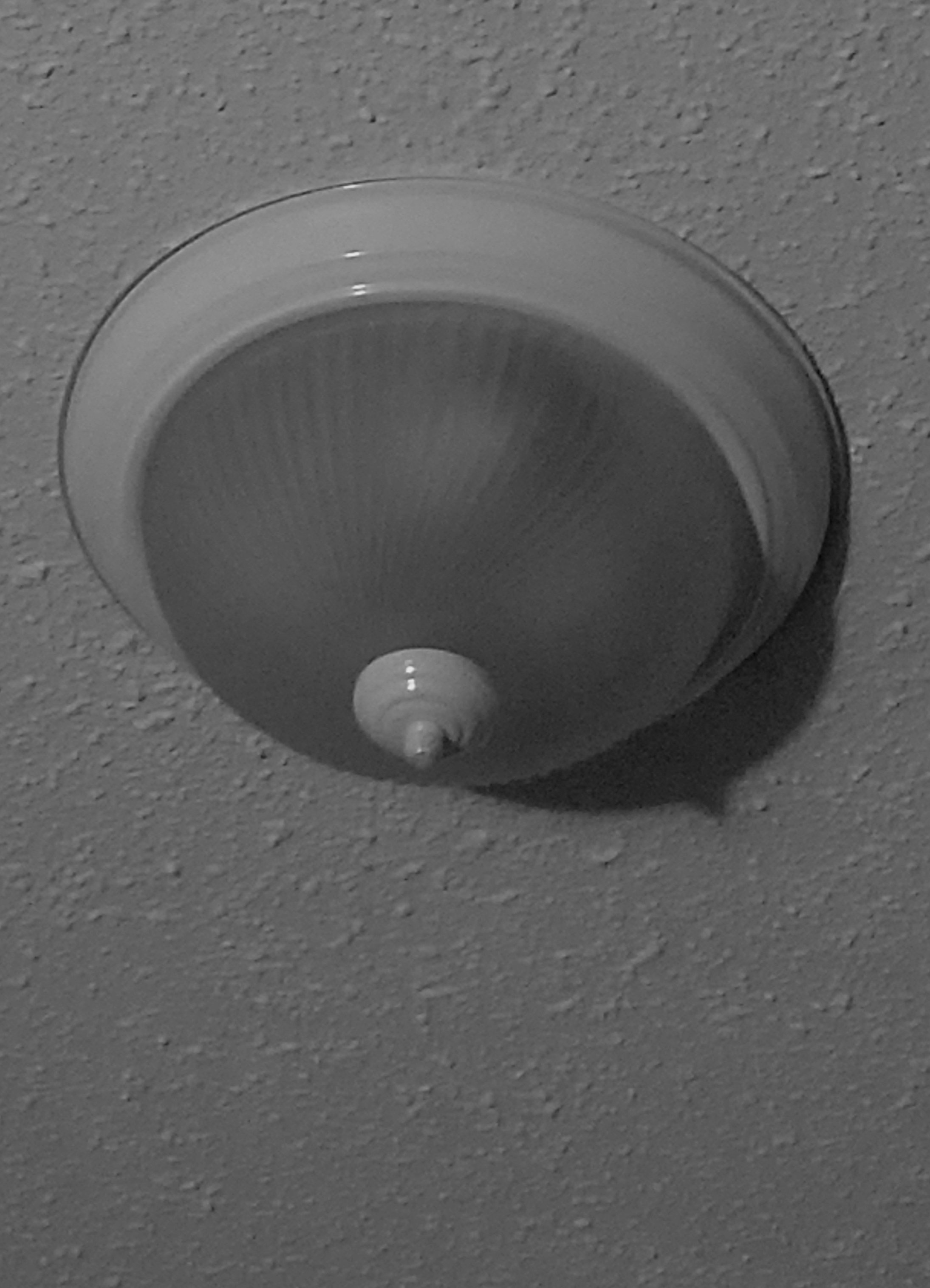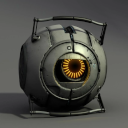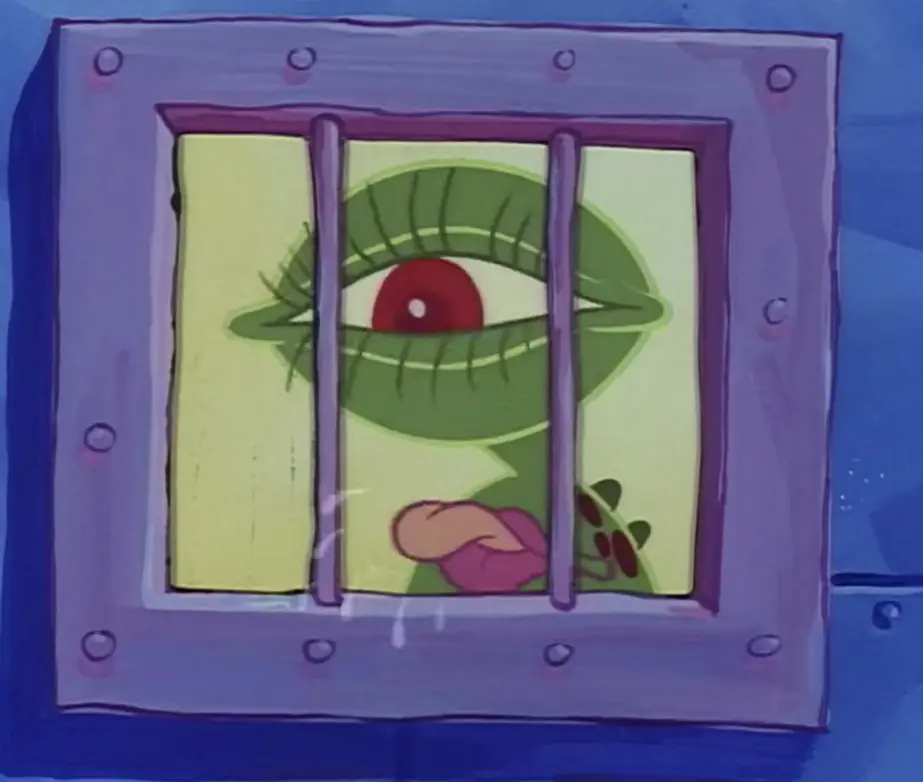Incandescent light bulbs are officially banned in the U.S.::America’s ban on incandescent light bulbs, 16 years in the making, is finally a reality. Well, mostly.
This sucks. I’m gonna have to compete with boomers for dim bulb tester refills.
Makes sense. Nonetheless, reminds me of modern washing machines. Yeah they make sense and save water but it stinks that it’s a compromise and it takes twice as long to wash. With Led bulbs it’s always a say a prayer situation to see if a particular bulb works with a particular dimmer and isn’t a flickering mess.
Led bulbs won’t even work with my garage door opener for some reason. I have to use incandescent or halogen bulbs.
Typically that’s only a problem if you buy non-dimmable bulbs. There are LEDs made specifically for dimmer switches.
Disagree. Many allegedly dimmable bulbs still have flicker issues, lifespan issues, and in my experience even some dimmers that claim to work with Led dimmable bulbs have different success rates with different dimmable leds.
The other thing I think worth mentioning is that for non standard bulb shapes and sizes it is difficult to find high quality name brand LED replacements. You end up with low quality Chinese small brands in these cases. I have had higher costs and more difficulty with these types of bulbs than convential incandescent options. I’m not being luddite here, all for the change, but currently it’s not without some sacrifice. I currently don’t believe I own any remaining incandescent bulbs. Outlawing incandescent options seems premature IMO.
I don’t have a strong opinion on dimmers as I don’t have any in my house. I personally feel that cutting electricity to the bulb to control brightness is a bit outdated: I think smart bulbs are the better technology to par with LED (though I concede they’re still pretty expensive.)
Per the article, nonstandard incandescents are still allowed to be manufactured.
Why are Republicans mad about it?!
because they think we should be burning whale oil
Because they’re driven entirely by emotion, not rationality. They were told to be angry about it, so they are. Plus, Biden or something.
Because imagining that someone might have a legitimate reason to want a product or service that a regulator might not have thought of is currently a “Republican” trait in the US.
Something about limiting consumer choice, but everyone purchased LED bulbs to begin with anyways…
When are they aren’t mad? LOL they can die mad for all I care.
deleted by creator
deleted by creator
Wondering if incandescents can still be sold as heat bulbs because that’s what they are
Yes they can. Also your fridge and oven will still have incandescent bulbs because more efficient lights aren’t great at operating in extreme temperatures.
manufacturers can still build and stores can continue selling:
Appliance lamps, including fridge and oven lights Black lights Bug lamps Colored lamps Infrared lamps Left-handed thread lamps Plant lights Floodlights Reflector lamps Showcase lamps Traffic signals Some other specialty lights, including marine lamps and some odd-sized bulbsWe have an LED light bar in our deep freezer and also our mini fridge. LEDs seem to work absolutely fine in the cold actually.
Yeah, LEDs are pretty ideal in the cold as long as they’re properly sealed from humidity. They don’t heat up your fridge extra every time you open the door. Oven lights definitely wouldn’t work unless you want a nice plastic glaze on top of the cake you’re baking.
You are correct about everything but I feel I should point out that the amount of heat produced by an incandescent bulb in your fridge is miniscule compared to the heat energy of the warm air that enters your fridge as soon as you open the door. Cold air sinks due to its density and so when you open the door it all falls out and your fridge must work it’s ass off to cool all the new air back down to the set temperature. The heat added by an incandescent bulb for a few seconds is basically irrelevant.
This is also why chest freezers are so tremendously efficient. When you open the lid, the cold air stays inside. Very little mixing occurs with the rest of the environment.
Yeah, it’s not a lot of heat, but it starts making a bigger difference once you’ve got the fridge packed full of stuff (less air loss, also makes it take longer to find stuff, so the light stays on longer). I’ve had items at the back near the bulb get extra freezer burned because of the constant heating/cooling. That was quite an old fridge/freezer though, so not the most efficient to start with, and the temperature control could have been better.
I do love chest freezers. They’re way more efficient and I find a lot easier to organize too. There’s some fridge/freezer combos that have a freezer drawer, but I’ve yet to find one that’s fully enclosed so all the cold air stays in. Most I’ve seen have wire baskets or something for the drawer… Having space for a separate chest freezer is not a luxury everyone has.
We call them “space heaters”…
What is not banned?
Surprisingly, there is a whole slew of exempt special-purpose bulbs that will continue to be manufactured, according to the Energy Department. Here’s what manufacturers can still build and stores can continue selling:
- Appliance lamps, including fridge and oven lights
- Black lights
- Bug lamps
- Colored lamps
- Infrared lamps
- Left-handed thread lamps
- Plant lights
- Floodlights
- Reflector lamps
- Showcase lamps
- Traffic signals
- Some other specialty lights, including marine lamps and some odd-sized bulbs
I mean, good for the effort, but that’s still a lot of exceptions.
If you still have a fridge or oven that takes incandescent bulbs, isn’t it better to replace the bulb than the fridge? If the point is minimal environmental impact then I think that makes sense.
Well sure but you could just replace it with an LED bulb…
Edit: missed the word oven. My question is just for fridges
I don’t think you can put an LED bulb in an oven, well I mean I guess you could try but good luck with that, I don’t imagine it would last very long at all.
You can put an LED bulb in a fridge though, I put LEDs in mine. I don’t really need to worry that much about my oven though because it’s a small oven and doesn’t have a light in there to begin with.
I mean why would you force LEDs for ovens in the first place. The place they are in is supposed to get hot. And that’s what the ineffeciency in incandescent light bulbs normally is. They get hot. Doesn’t seam like an issue that they make the place that’s supposed to get hot hot.
The enefficiency is that they take up nearly a magnitude more power and last a fraction of the time, meaning you have to manufacture 20x more of them.
Having said that, I’m not sure if I support this change. People are already switching light bulbs naturally. It saves energy, doesn’t heat up, and lasts longer. You don’t really need much more incentive than that. I wonder if this will have any meaningful impact whatsoever. And if it doesn’t, why are we banning items for no societal benefit?
Apparently they do have a long list of exemptions, at least. I think legislative focus would be better spent on increasing renewable energy production. Solar, hydro, wind, nuclear.
I don’t know about the energy efficiency, but the life time of the bulb is a variable that they intentionally designed that way. They know how to make an incandescent light bulb that will last indefinitely. The industry colluded with each other to manufacture bulbs that have to be replaced frequently.
…Why not both? It makes sense for it to be illegal to sell a device that consumes more than 6x the power of the equivalent and dies significantly more frequently. I searched for statistics and it seems like 20-30% of bulbs sold are incandescent. That means well over half the energy consumption of light bulbs still comes from them. It’s low hanging fruit that can have an almost immediate impact, even if it’s not enough on its own.
Those 20~30% are likely either a) appliances like people are mentioning. Stoves, fridges, etc. Which have reasons for being incandescent for which the law gives exemptions and b) old bulbs that would have inevitably been changed to incandescent anyway
I really think this law isn’t going to make a significant difference in the % of incandescent bulbs over the next few decades. We’re essentially going to transition at the same rate to a fully LED, whether the law existed or not.
So my question is - what’s the point? We waste political capital and time that could be better spent doing meaningful things. And we can do things that don’t arbitrarily restrict the choices of our citizens.
It’s paying lip service without actually doing anything. Theatre.
Make our energy production 100% renewable and it doesn’t matter in terms of carbon emissions if your bulb uses 4x more energy (of course ignoring production emissions, but just for the sake of rhetoric)
I hate to break it to you, but the heating element in the oven uses a magnitude more energy than that little old incandescent light. And the energy otherwise lost from an incandescent light is lost to heat, which just so happens to be the entire purpose of an oven. So in the case of an oven, there’s actually no more energy lost than the heat it’s already designed to generate.
Besides, have you ever tried putting electronics in an oven? LED’s don’t exactly like heat ya know…
That’s true, but that’s also still a lot of incandescent light bulbs. I guess you have to compromise somewhere, for now at least.
Some of these bulbs might be difficult to find in LED and there might be other considerations like shape, heat, dimmer compatibility, etc… Replacing fixtures could represent a significant burden in these cases and thought there are many exceptions listed they likely represent a small percentage of overall usage.
I’ve seen dimmer compatible LEDs and, even better, LED bulbs that have built in control of light intensity and even color. I’ve even seen bulbs capable of playing music through bluetooth!
Shape I don’t really see as a concern, as any shape an incandescent bulb can be produced in, a LED bulb can also be. And then some, as the LEDs can be set up, twisted and bent into some very imaginative shapes and angles.
And heat is not ready a concern. You can touch most LED bulbs with your bare hands with no risk of severe burn. Unless very high wattage is in play, at most, a LED bulb will be warm to the touch.
And heat is not ready a concern. You can touch most LED bulbs with your bare hands with no risk of severe burn.
This very clearly indicates that you haven’t seriously considered this issue at all, and are just supporting your political faction with no reflection on what the unintended consequences might be.
A common application of incandescent bulbs is to produce heat, for a variety of use cases. The typical example is an improvised chicken incubator.
Consider very carefully why there’s an exception for traffic signals.
This is exactly what I was getting at. There are so many considerations and they clearly put some thought into the exception list even though the reasons may not be readily apparent. The order is not a small step in the right direction it’s a significant step in the right direction and the impact on actual electricity usage is going to be massive.
the impact on actual electricity usage is going to be massive.
Is it?
How many people are still installing new incandescent bulbs in 2023?
Is there an actual study showing the expected costs and benefits of this rule, or is it purely political posturing?
The article had an estimate from the DoE. Idk, be mad about it if you want. LED bulbs aren’t perfect but what is.
“As the rules reinforce existing market changes, the Energy Department believes that U.S. consumers can save almost $3 billion annually on their utility bills. Similarly, it projects that the rules could cut carbon emissions by 222 million metric tons over the next 30 years.”
I can’t find such a study, and it seems extremely unlikely to me that any such study was performed recently. The original law was passed in 2007, and then the regulations were in political limbo for more than a decade.
My base hypotheses here, subject to easy refutation by any real evidence, are that:
- The DOE has looked at no study from after 2007 to justify their current policies.
- This regulation is going into effect now simply because it was on the list of stuff Trump did that the Biden admin reversed.
- The effect on consumer electricity costs and carbon emissions are negligible, since LED bulbs are a decade cheaper and better and almost everyone voluntarily buys them.
Try not to dismiss everything so quickly. I came up with those in 5 minutes but a committee of experts could find many more. When the exceptions were written they had a reason. A few examples:
-
In a traffic fixture, the heat that the incandescent bulb generates often serves to melt ice, and early traffic fixtures with LEDs did have icing problems. Replacing the fixtures would represent a significant burden.
-
An LED wouldn’t survive in an oven and oven lights aren’t on for very long either so what would it matter?
-
A bulb in a refrigerator could be exposed to condensation.
-
Dimmer compatible LEDs require pulse width modulated dimmers. Incandescent dimmers are often resistance dimmers.
The exception are there to make sure that a $1 part doesn’t render a $1000 appliance inoperable. Replacing the appliance would undoubtedly generate a ton more carbon than using an incandescent and the rule doesn’t say that LED bulbs are prohibited just that incandescent bulbs for those uses are not yet banned.
I’ll also point out that LEDs are made of plastic and essentially become ewaste at the end of their life so there is a trade off to consider too.
LED refrigerator bulbs are already a thing; bought one recently by accident, when looking for a very low power/low brightness for a bed side table.
Those, apparently, are no longer a concern.
Screw in LED bulbs with built in brightness and color control, that you can command from a phone application or through a conventional remote control, are already common, thus rendering conventional dimmers obsolete.
Why keep those? To my very limited knowledge, dimmers can require expensive and extensive installation.
I have seen LED traffic lights with built in anti frost measures and the expenditure to have those replaced is not a good argument to keep that particular use of incandescent lamps around.
LED low power requirements, paired with their long service life, enables traffic lights to be independent from the power grid, through the use of solar panels and batteries, keeping it working even when severe weather disrupts energy distribution. LEDs are also brighter and easier to see from afar.
There may be very particular cases where incandescent bulbs still do not have an alternative but to say they are irreplaceable is a disservice.
I’m not trying to be dismissive, I’m trying to be demanding.
I have a garage door opener and I guess it’s just not shielded well enough because LED light bulbs interfere with the signal from my remote, just one example. I would much rather buy new incandescent bulbs every few years than replace the opener outright.
-
Black lights
Nice.
They’re lights that emit in the ultraviolet part of the spectrum for the purpose of making fluorescent materials light up. To the human eye they don’t look quite black, but more like a darkish purple.
But yeah, I too always found the name deliciously ironic.
deleted by creator
Several of these exceptions are unexpected. Oven light, sure: LEDs can’t survive the heat. That makes sense. Plant lights because you probably need full spectrum. And traffic signals because they’re odd shape and fixtures probably last decades, but the rest?
Bug lights? A regular LED attracts fewer bugs than an incandescent bug light …. Unless they mean an attractant like fora bug zapper
Flood lights? Reflector lights? Fridge lights? Colored lights? Why aren’t these all LED?
Plants don’t need much, if any, green light (they reflect it). LEDs can be made to be full spectrum. I can think of no reason why anyone would want incandescent lights for plants. Even before cheap high power LEDs were a thing, people usually used high pressure sodium lights.
OPs list is wrong, that’s why. DOE revised the definition of a general service lamp in 2022 to include the vast majority of reflector lamps. Bug/appliance/left hand thread/etc are all sold im tiny numbers and therefore exempt.
I was just quoting the article. ¯_(ツ)_/¯ I assumed, perhaps wrongly, that the writer knew what they were talking about, which I guess was wrong of me.
That’s totally fair. I happen to know a lot about this topic and didn’t read the article at first, and I also meant OP as in whoever posted the article, not you. I could have been more helpful here, sorry.
This article is dogshit, and those are not the current exemptions. DOE revised the definition of a general service lamp on 2022 to include the majority of reflectors. The rest have miniscule sales and have technical limitations that make LED replacements difficult. It’s not a lot of exemptions. When was the last time you bought a left hand thread or a colored incandescent lamp?
I don’t get the exception for colored incandescent. LEDs come in whatever color you want, or get a smart bulb to change it at will
I’m curious, could you tell me some use for left-hand thread lamps? I don’t think I’ve ever seen one
You need a history expert for this one. I want to say theft deterrent, and possibly different voltages for niche applications. Also Need Flanders Leftorium.
Seems like it’s a theft deterrent since they won’t work in “normal” sockets?
Let’s be real here, people have switched to LEDs a long time before this ban happened. But that’s a good thing, and kind of the whole point of the timeline of this ban.
You want the market to decide on its own that LEDs are superior and then give it time to slowly switch over. Setting a ban and then forcing people to switch in 3 months to some new lighting technology is only going to build resentment from certain groups. Setting a ban that is 5, 10, 15 years out is the smart way of doing it. The thinking is that by then, the superior product will have already taken over the older tech and people won’t be up-in-arms over the big bag gob’ment telling them what to do.
Every chunk of positive social progress has “built resentment from certain groups.” Those people eventually either get over themselves and join modern society in doing the thing properly, or die mad. The rest of us are fine either way.
I wish the LEDs weren’t such crap. They don’t even last as long as a 60W incandescent a lot of times. The old CFLs last years, I have a few over ten years old.
I had CFLs burn out all the time.
My LEDs have all been rock solid. Even the cheap ones.
I’m curious about what fixtures your led light bulbs were in.
Old incandescent lights worked great at high heat levels, so a typical boob light fixture that kept the heat in would be fine for an incandescent. Put an LED light in there, and it can still heat up beyond design capacity and might not get enough ventilation and age prematurely.
The only leds that failed for me were inside a fixture meant for incandescent lights. All our open bulbs or specially designed for led fixtures have been going strong for half a decade or more.
Stoned me read boob light and was like, ‘oh ya’. But I gotta make sure, we mean like

(image of a dome light cover with a protruding “nipple” at it’s highest point-- making it breast-like in appearance.)
can confirm, these are boob lights. even my wife uses the term. ripped every one out shortly after we moved in.
Exactly 😆
I can’t think of another term for them.
Getting rid of them made our place look a lot less like 1997
My apartment has one of those light fixtures in the living room and it uses a dimmer dial. I once tried to replace the incandescent bulbs with what seemed to be the LED equivalent that could be used with a dimmer, but it just didn’t work right. Lots of flickering. I hope this will convince my landlord to replace the fixture so I can finish changing everything to LED.
There are different types of dimmers to work with different types of bulbs. You may get better results with a summer rated for LEDs
For dimmers, you either need smart bulbs that do it themselves or a dimmer switch that you know is guaranteed to work with that bulb, it’s tricky. Also, LED lights that get warmer (change colour tone to a more orange colour) as they dim are far more pleasing than just dimming since they emulate what incandescent bulbs do. Sometimes if the power supply to your unit or building is choppy leds are the first to show it, so hope it’s not that.
Good luck with your landlord, let’s hope they’re a good one.
Thanks for the advice!
Planned obsolescence is a thing here. The LEDs don’t fail, it’s the power circuitry. Unfortunately the fixture theory doesn’t pan out, as fixtures meant for incandescent bulbs need to be able to dissipate much more heat (about 6 times as much). I’ve been using LED bulbs for 7 years in all sorts of different fixtures and have never had even one burn out on me. Why? I don’t really know. Maybe I turn the lights on less often than other people?
I have a 10+ year old LED bulb of corn type, made by a local manufacturer. Works great to this day. It outlived a few generations of store-bought crap like Philips and Emos in the rest of the house.
It’s more likely that the cheap ones are just using a driver board so cheap that it cannot tolerate the heat at all to cut costs, and the bulb dying sooner is just a nice side effect of that.
It’s best to just not buy the cheapest bulbs. I’ve had good luck with Philips.
I’ve been running pure led for 10 years. The only failures I’ve had were in heat prone fixtures not designed for leds
I don’t know what kind of crap LED light bulbs you get in the US but here in Europe to to get a CE mark (required to be able to import them into the EU) a model has to have less than 5% failure rate within (if I remember it correctly) the first year, last 10,000h at least (and have been tested for it, which is quite funny because the test requires having the thing always on for months), turn on within a second, lose (due to burn-in) less than a few percent (forgot the number) brightness within the first 6 months and a bunch of other requirements including stuff like color fidelity.
About a decade ago I actually looked into starting a business importing those things from China and still tody have several samples from back then still working fine (and that’s also why I know the CE mark requirements for LED light bulbs).
More in general I’ve been using LED lamps for even longer and even back in the day when they were more expensive those things paid for themselves in lower power costs, and often do so quite fast (a couple of months) when used to replace incandescents, plus the rate of failures is now pretty low.
(When I first replaced all my lightbulbs with LEDs, way back when they weren’t even as efficient as now, the fall in the electricity bill was very noticeable)
Oh, and the price of those things at the factory has been less than $1 for ages, so stores trying to sell those for more than $2 have huge markups and you’re better of avoiding those places and getting them from hardware stores and similar (or just buy online).
This hasn’t been my experience at all, I replaced most of the bulbs in my house with LEDs a couple years ago and I don’t think I’ve had to replace a single one since. When they were all incandescent, I was regularly replacing burned out bulbs. Check which brand you’re buying, you’re probably buying crap which is why you’re getting crap. I’ve found Phillips bulbs work great and are long lasting, I have some that’ve been in a fixture for 5 years now with no issue
Mostly capacitor plague or heat. I’ve only lost 2 / 50 in Open fixtures with good airflow over the last three years.
I have one outdoor that pops every spring the fixture is damn near sealed and in direct sunlight, but the HOA demands the fixture.
I haven’t had a filament LED fail on me yet. The cheapest LEDs you can find aren’t worth it; best to get a name brand.
Name brand like Philips don’t die quickly (mostly) but they lose its brightness pretty fast. I have few 12w MyCare™, it’s going strong for like 3 years but it’s now only as bright as my new 6w LED.
We need more systems where we can just replace the power supplies on these bulbs.
Well… only 11 yrs after EU… That’s not so bad.
https://ec.europa.eu/commission/presscorner/detail/en/IP_08_1909
for real though… as an American I would love if we were 11 years behind the EU in lots of other areas
You’re 11 years behind us in energy prices as well, so make the most of it.
Yep. Even Canada banned most common incandescent bulbs in 2014 and 2015.
Yikes. Put a brand new LED bulb in my basement on Sunday. It was dead on Wednesday. Incandescent seems to be the only bulbs that last down there. I better stock up before the stores run dry…
I wonder if this will have any effect on the film industry…
I had always used incandescent bulbs in practicals but now there are LED bulbs made specifically for film sets. Household LED bulbs are usually a mess on camera with ugly color spikes and/or flickering.
I’ve been lighting almost exclusively with LED these days aside from some HMI’s, but even those are starting to get LED competition, at least for smaller ones.
Look at the Power Factor (PF) and Colot Reproduction Index (CRI) of the LED light bulb.
If the former is something like 50% then it means it has a cheap power rectifier inside (little more than a bunch of diodes) which doesn’t at all filter the power fluctuating nature of AC (basically all it does is make the negative side of the sinusoidal wave that’s AC become positve and leaves the whole voltage variance from 0 to max and back untouched) hence the flickering.
The latter quite literally tells you how good the colors look under that lighting. You want at least 90%, with more being better.
Mind you, nowadays CRI is usually not a problem, but the whole cheap power rectification inside the bulb generally is (because a basic power rectifier can cut 10% or more of the manufacturing price of a lightbulb).
Cri is a common specification I see, even if I suspect lots of lying. Where do you find PF information? I don’t remember ever seeing it on any bulb packaging before.
Yeah, that’s the problem: PF is not mandatory to be in the packaging so it’s not usually there.
If you buy online, sometimes you can find it in the product information section.
I’ve noticed that the “usual chinese sellers” will mention it if it’s good (say, 80%) but not when it’s the cheap-converter one (50%).
Alternativelly when looking for the bulbs not likely to flicker you might also look for the “dimmable” ones, as the abiloty for a light lamp to support an external dimmer requirex a better power converter inside the bulb.
Thanks for your response! If you light events with broadcast cameras, I am the annoying video engineer behind the camera controls asking about flicker and color balance. I hope they keep making y’all’s specialty bulbs. Looks like there’s a big list of exceptions!
I would think they’ll be mostly over to LED by now.
ban isn’t needed or good
Found the fuck who thinks others will blindly believe statements made by random strangers on the internet with 0 credible sources or proof just like they do lmfao
I’m not sure what you’re trying to say here, I just think that if the technology is good enough, people will adopt it anyway so it’s not needed, and bans can be bad like idk if you support banning drugs but it can create unintended harms (maybe there is a legit use for the old bulbs in some places, and by no means have people used up the supply we already have)
These aren’t really sound points, although they’re logical on paper.
This is namely because you’re over simplifying matters. People don’t just adopt things because they’re “good”
Look at Betamax, that shit was definitely better than DVD technically but people still bought in. As much as I’d love to believe in simple, traditional economic ideals - they’re just sugar water and it’s sure to cause vision problems if you continue to consume it so recklessly
True, but most of the US already did buy into LEDs.
LEDS are not the the problem, it’s the soldering them that inconveniences most people.
There’s plenty of startups that are pushing for more modular (think Lego brick) technologies to help us be more sustainable and replaceable in the digital age
It’s the same reason lightbulbs aren’t hard wired to the house and are instead fastened
Cure rage in certain circles
Can’t wait for this to be the hot button issue in certain presidential campaigns this cycle.





















